Mobile Application Management (MAM) = Complete Mobile Workplace?
Ok, so I’ve been looking at some of the players out there that say they have a “MAM” product and everybody seem so hooked on talking about MAM and how that’s gonna solve all the needs of a Mobile Workplace… and to be totally frank I think that people tend to run to fast with new cool and hip buzz-words or solutions.
To start of with, what is the definition of a MAM system? This is a pretty good summary I’d say that I stole from WikiPedia;
“Mobile Application Management (MAM) describes software and services that accelerate and simplify the creation of internally developed or “in-house” enterprise mobile applications. It also describes the deployment and management of in-house and commercially available mobile apps used in business settings on both company-provided and “bring your own” smartphones and tablet computers.
Mobile application management has also been defined as “the strategy and process around developing/procuring, securing, deploying, accessing, configuring, updating and removing (business) applications from mobile devices used by the employees. To read more at wikipedia click here…”
And does a solution like this provide all the capabilities for businesses today for a complete Mobile Workplace?
So, how do the different MAM vendors out there do? Are they ready from a scalability, capability and usability point of view? To be honest I’ve not played around with even a fraction of the products out there. But I’ve tried to understand what’s important when entering the whole mobility world where you need to support your business functions and processes. And one thing is clear; Mobility does not just mean that you need to setup an enterprise app store deliver some iOS or Android apps to a mobile device, users need more than just native or HTML5 apps to do their work.
First of I’m a bit bias of course though I just happen to agree with most of the Citrix-story and what they do. They have a complete E2E view, and of course they also have a lot of missing parts but my personal view is that they are ahead in a lot of areas but most due to that the have the E2E story. Especially when it comes to delivering an optimized end-user experience for all the different features they support, you can take any device with the Receiver and get access to the following deliveries (and of course the capabilities below are not just MAM-related so you don’t think I’m nuts);
- SaaS (SSO and provisioning support)
- XenApp apps & desktops
- XenDesktop desktops
- Internal Web apps (WITHOUT establishing SSL VPN tunnels, see more about MDX here and also this great blog post about it)
- Mobile apps – read more about CloudGateway here
- iOS apps
- Android apps (not released yet though but soon we hope)
- HTML5 apps
- Data (ShareFile a.k.a “Enterprise Dropbox”) – read more about ShareFile here and especially review the new features that you can try in tech preview mode.
- Network access (SSL VPN)
- GoToAssist – a vital part of the new Way of working (WOW) is of course also putting requirements on you as a service delivery organization to be able to support these unmanaged devices that are connected “somewhere” and not on the corporate internal network.
And now you ask why I’m bringing all this into this post which should be about if MAM solutions is the only thing you need… I think that whatever solution or platform we have out there we should aim to reduce complexity and thereby also cost and at the same time increase delivery times. How many times haven’t you heard from the business side that IT is to slow to get apps and functionality implemented, and that for each new business capability needed IT needs to purchase another product and it just further makes the end-user experience worse? And please don’t forget that there are most likely a lot of legacy to take into consideration as well that won’t disappear quickly in larger organizations…
I think that this is where Citrix is in the lead now, they are not just addressing whether we can manage the device (old MDM thinking), they are thinking in the right mindset like many others out there do as well (VMware with Horizon, Symantec, SAP with Afaria and the list is loooong..). But the others don’t (yet as far as I know at least) have the overall story to deliver every item to the end-user and to any device in a secure and controlled way. And now I’m starting to sound like a Citrix sales person telling everybody that everything is hunky-dory if you just buy the whole Citrix suite! Wow… that was NOT my intention! I must correct myself and once again say that there are features and issues with the current products from Citrix as well of course!
But I still think that Citrix are leading the pack right now for the whole “Mobile workplace” story. Others are very good at a specific delivery like iOS and Android apps stores and deliveries of that, but most tend to be more like a traditional MDM model and they can not for instance just deliver an internal web page quickly or a hosted shared desktop running on XenApp to any device or ensuring that you may need network connectivity in the old SSL VPN fashion!
But what are then the down-sides with what Citrix delivers today? I’d say that the StoreFront and AppController (CloudGateway Enterprise) solution and feature set is great, but does it deliver in an enterprise world and is it up to par yet? I’d say that Citrix has some work to do in terms of supporting the enterprise market a bit more. For instance multi-domain support, improved governance structure and delegated administration of the products, improved scalability and support for multi-site implementations where the DB of both StoreFront and AppController data is replicated between sites. And then of course Citrix has a great suite or products but I can see that they can work a bit more on the cross-product development to ensure that all products are aligned from a delivery point of view. And why doesn’t Citrix provide E2E monitoring and reporting services for all their products? And what about a patch management solution for their products (so that you don’t have to manually install patches, copy files and change reg keys for PVS updates for instance)? Of course you can package patches etc by yourself and distribute with SCCM or so but I expect more from Citrix in this area for all products to simplify service delivery using the products and life-cycle management.
Ok, back to the topic; would you like to implement solution X for delivering mobile apps to iOS, Windows Phone and Android devices and then another solution (Y) to deliver hosted apps and desktops like Citrix XenApp/Xendesktop? And possibly a third solution (Z) for delivering an enterprise dropbox or “Follow-Me-Data” service to your users? And then you need a forth solution (Q) to deliver native apps to for instance the primary Windows device and use something like SCCM 2012 to also support other requirements like asset management etc. That would potentially mean that each user has to remember to download app X, Y, Z and Q in order to get his/her mobile workplace to roam with him unless you decide to “manage” and control the device bottom-up as the old Legacy way and that’s not very “BYOD”-like…. And it may also even not support SSO across them all so he needs to sign in everywhere. Is that user friendly? I’d say no, and those are the reasons why I’m very interested and hoping a lot that the Citrix story is the one to go for because they are targeting the right business needs and capabilities that most out there need when looking at the BYOD, BYO and whatever you wanna call it initiatives! And the MDM way where your company all of a sudden decide to wipe a device that is a consultants device or a personal device, how will that fly? STOP managing the device and manage the apps and data! And no matter what you don’t want to end up with multiple platforms that you have to manage, control and ensure that you have service delivery resources that needs separate Incident, Problem, Change, Life-Cycle management processes. And you also have to ensure that you delivery team is up to date with all of them that increases costs as well…
And this is how I’d like to tackle the whole idea of setting your future architecture in place, you need to review all the business needs and capabilities and map that into the architecture services needed and all of a sudden then that’s your Target Architecture! And then once you have that you need to sit down and look at the overall delivery aspects of it and discuss which products the services in the architecture will require. For instance you need to determine how to handle Mobile devices and apps to those, but also how to deal with corporate owned devices and how to deliver apps to those. And then you need to start looking at your As-Is architecture, products and license models and then create the roadmap for how to get to the target. And that’s when you will see that Citrix ha a pretty good offering out there, they cannot do it all and most likely will never do. But I think that what Microsoft now offers in terms of SW mgmt and config mgmt with SCCM 2012 that will get OS X, Linux an UNIX support and hopefully a comparable feature set to what they support on Windows so you have a solution there for your managed/corporate owned fat devices. Then I think that the delivery to the BYOD or non-corporate devices are pretty well covered by the Citrix story (not fully yet but on a good way towards what I think most will need). And short-term I think you just have to acknowledge that you will have multiple solutions and products to provide an overall Mobile Workplace service(s) to your users.
But where are the others on adding capabilities to this area of business needs? I’d say that VMware with the Horizon story is getting there, but will the product ever ship and how well will Octopus work and will it support all the use cases and scenarios that enterprises has? And what about the whole Horizon Mobile for Android and their virtualization, and how will they tackle the issue with this functionality on iOS? And VMware is integrating with Citrix XenApp/XenDesktop to be able to deliver hosted apps and desktops, but I don’t see that they have the E2E delivery that Citrix has in terms of the protocols, NetScaler, StoreFront and AppController and SmartAccess support. They can absolutely make it but I think they need to speed up! And there are more solutions out there of course, Symantec being one but I doubt that they can speed up and deliver something and then you have the other products as well that today are so focused on getting from a MDM way of working to an MAM model that they all of a sudden will wake up and see that the train has left due to that they forgot about the Follow-Me-Data, Internal Web apps, SaaS etc that also are needed to form the whole Mobile Workplace…
And I must also encourage you to read Brian’s blog post about this topic as well!
So the conclusion; will MAM provide you with everything for a Mobile Workplace? My answer is NO, you need a lot more and one suggestion by me is still to have a look at the overall Citrix offerings even though they may not still cater all your need right now.
What are your thoughts on this and who has the best overall story and capabilities right now to support your BYOD, BYO, Mobility, Mobile Workplace, Remote Office strategy?
//Richard
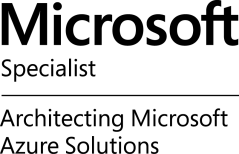
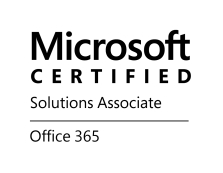
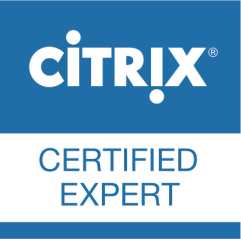
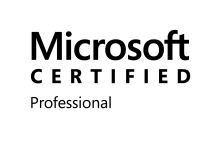
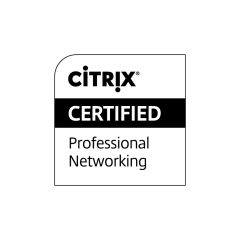
Woah! I’m really enjoying the template/theme of
this website. It’s simple, yet effective.
A lot of times it’s difficult to get that “perfect balance” between user friendliness
and appearance. I must say that you’ve done a excellent job with this.
Additionally, the blog loads super quick for me on Chrome.
Outstanding Blog!